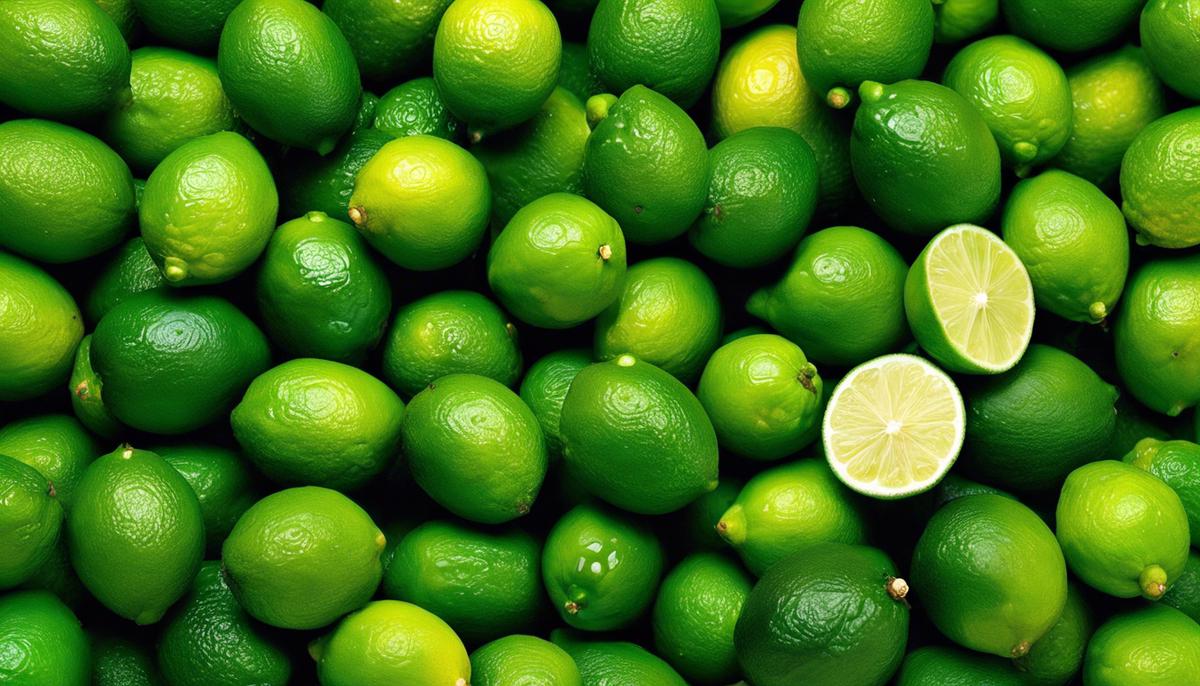Easy Steps to Apply Lime on Your Lawn

Maintaining a healthy, vibrant lawn requires not only regular watering and mowing but also a keen understanding of the soil’s pH level. A critical component in this upkeep is the application of lime, a means by which you can balance your lawn’s pH level to optimize nutrient absorption, thereby promoting lawn health and even deterring certain pests. While this might sound intimidating at first, with a little knowledge about the different types of lime available in the market and how to apply them, your lawn’s health can be managed effectively.
Understanding the Need for Lime
Infusing Life into Your Lawn: The Power of Lime Application
There’s quite a symphony of elements that make a healthy lawn glow. Ask any avid gardener or landscaper, and right up there with sunlight, good soil and just the right amount of water is lime. It’s not the zesty citrus, but the dolomitic type that can truly enhance the vitality of your lawn.
Why is lime so significant, one might ask? Well, lime enriches the soil by reducing acidity and bolstering crucial nutrients. But the benefits are manifold, so let’s dive right in.
First off, lime serves as a magnificent pH balancer. Lawns require a slightly acidic environment. However, when the pH level veers too far into acidity, it could be a detriment to the growth and color of your grass. The acids in the soil deplete essential nutrients, creating an inhospitable environment for those luscious green blades.
Lime, in contrast, is alkaline. By adding it to the soil, it counters the high acidity levels, biting back and bringing the pH level to an optimum range. The rebalanced environment becomes a welcoming host to essential nutrients, primarily magnesium and calcium.
That brings us to the next advantage of lime – its nutrient-boosting properties. Incorporating lime is like introducing your lawn to a grand buffet of its favorite fare. Lime contains compounds of calcium and magnesium – nutrients that grass absolutely relishes. These nutrients promote strong growth, vibrant green color, and a robust resistance to diseases and pests.
Beyond the beauty it brings, lime also improves soil structure. A thick, hard soil makes it difficult for water and nutrients to percolate down to the root level where they’re most needed. Lime comes to the rescue, breaking up the solid soil and creating space for water, nutrients, and root expansion. The result is a dense, vigorous, hearty lawn that is the envy of the neighborhood.
Now, understanding the lime landscape is essential. There’s dolomitic limestone, which contains magnesium and calcium, and calcitic limestone, typically high in calcium and lower in magnesium. Dolomitic is the all-rounder and more commonly used in most lawns. Hydrated lime, though faster-acting, shouldn’t be used unless an expert has recommended it, since it may raise soil pH levels too rapidly, causing more damage than good.
Timing is also key. The perfect time to apply lime is in the late fall or early spring, ensuring the grass can make the most of it during the vigorous growing season. Always remember to test the soil’s pH beforehand to measure acidity levels and adjust the lime usage accordingly.
Just like those beautiful, verdant grass blades, knowledge too grows one blade at a time. Involving lime in lawn care elevates the game, making the yard, not just a standout but also an oasis for healthy, happy grass to flourish and thrive. So here’s to more lime-light on the lawn and a prouder walk along the garden aisles!

Selecting and Purchasing the Right Lime
Understanding The Right Lime for Your Lawn: The Ultimate Guide
Continuing from where we left off on the beneficial effects of lime on your lawn, it’s imperative to delve into the specifics of the types of lime you can utilize. With various categories available on the market like dolomitic lime, hydrated lime, and calcitic lime, it’s crucial to know which type matches your lawn’s requirement.
Let’s start by examining dolomitic lime. This kind of lime is rich in magnesium along with calcium, making it the perfect choice if your lawn’s soil lacks these two essential minerals. It’s composed of calcium magnesium carbonate and neutralizes acidic soil efficiently, making it the go-to for most gardening enthusiasts.
On the other hand, calcitic lime, primarily made up of calcium carbonate, is the best choice if your lawn’s soil is deficient in calcium alone. It works wonders in bringing the soil’s pH levels back to the optimal range for healthy grass growth.
Hydrated lime, also known as “burnt lime,” or “quicklime,” despite being very effective at rectifying the soil pH levels, might not be the safest option for your lawn as it can inadvertently result in soil pH tipping towards alkalinity. Due to its high pH, it’s considered much more potent than other lime types, and it is advisable to utilize it under expert guidance.
Following close behind is pelletized lime which offers the benefits of quicklime and dolomitic lime, but in a safer, more user-friendly form. Its slow-releasing property allows gradual balancing of the soil’s pH level, reducing the risk of making the soil excessively alkaline.
Please bear in mind that the choice of lime must align with the specific needs of your lawn. Just as we test the soil’s pH to know how acidic or alkaline it is, a soil nutrient test can reveal what nutrients are deficient. For instance, if the soil lacks both calcium and magnesium, dolomitic lime would be the prime choice. On the other hand, for a calcium-deficient lawn, calcitic lime would do the magic.
Remember, using lime as part of your meticulous lawn care routine is not a one-size-fits-all affair but rather requires precise optimization based on your lawn’s unique characteristics. Now that you’re equipped with all the necessary information, it’s time to work your magic and give your lawn the lush, vibrant makeover it deserves. Happy liming!

Application Process and Timing
After discussing the incredible benefits of incorporating lime to your lawn care regimen, let’s now delve into the frequency and timing of lime application. A beautiful and healthy lawn doesn’t happen overnight. It requires a consistent routine of TLC. Part of that routine is lime application.
However, knowing when and how often to apply lime to your lawn can be a challenge, especially for beginners. Lime cannot be applied to your beautiful green oasis whenever you like. The timing is crucial for progress. You don’t want to jeopardize the health of those lush green blades, do you?
Typically, it is recommended to apply lime to your lawn once a year. Depending on the condition of your lawn and the soil pH, this frequency may vary. Testing the soil pH is essential. This already highlighted measure will give you a better perspective on the frequency of lime application. If the pH is too low, meaning your lawn’s soil is acidic, then lime application may become a twice-a-year affair.
As for the timing, late fall is generally regarded as the most appropriate period for the application of lime to your lawn. The simple reason being, during autumn the lime has ample time to react with the soil as it stays put due to the frost and rains. It has enough time to work its magic, adjust soil pH and make your soil healthier over winter.
One of the most common errors while applying lime is using a lot of it at once. The trick is to apply it a little at a time, consistently. Dumping a surplus of lime onto your lawn could result in an undesirable alkali soil. Think of it in culinary terms – how too many cooks can spoil the broth. Much like our beloved dishes, maintaining a lawn also requires precision.
If your lawn needs a hefty dose of lime, apply half of it in one direction and the remaining half in an opposite direction. Alternatively, you can apply half this fall and the remaining half during springtime.
Remember, “Patience is the manure of progress”. Reflect on it whenever the excitement of tending to your lawn seems overwhelming. There’s beauty in understanding that a perfect, healthy lawn is not achieved in a day. The journey is slow, rewarding, and totally worth it.
In the end, executing a well-planned lime application regime can turn those lawn dreams into reality by ensuring lush, green, and vibrant grass that could be the envy of the town.
So, don your gloves, grab that bag of lime, and let the soil enjoy its lime spa treatment! Let the grass glide under your feet, and enjoy the fruit of your labor.

Following the aforementioned guidelines can turn an unhealthy, struggling lawn into a thriving, lush landscape that is the envy of the neighborhood. It’s not always easy and does require your attention and diligence. But remember, a well-balanced lawn doesn’t just appear overnight. Having learned about the critical role of lime in lawn care, from selection to application, and understanding its significance in maintaining the right pH balance, you are now equipped to make an informed decision about how to best utilize lime in your ongoing lawn care routine.



